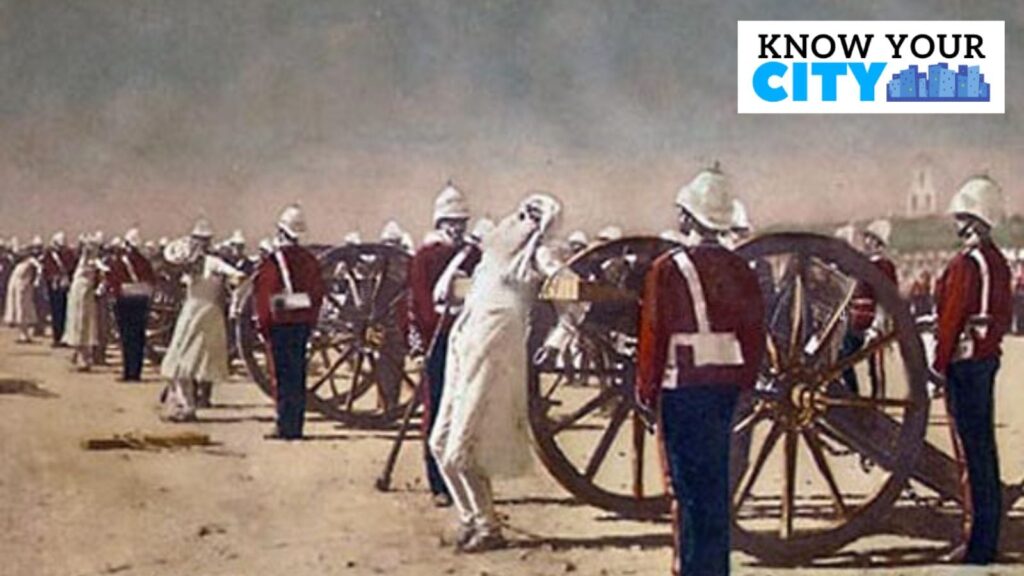When speaking of rebellions in India in the 19th century, most minds are immediately drawn to 1857, when the rising tensions, national and religious sentiments within the Army, that had once won India for the British, erupted into revolt and open warfare. But decades before this, in 1832, sepoys in the British service had already mutinied against foreign rule – in Bengaluru, where the heart of the local administration and British military was being consolidated.
As historian William Dalrymple notes in The Last Mughal, the early 1800s marked a period where the British colonists became increasingly detached from their Indian subjects in certain aspects. A sepoy who fought on the British side in 1857 had also written in his memoirs of how the British officers had become increasingly unfamiliar with the soldiers they commanded. This distance and class separation were by no means limited to the North.
Bengaluru historian Aliyeh Rizvi, who has extensively researched and written about the revolt, notes, “Even if you look at the geography of the cantonment, you will see how much there was social segregation, whether it was access to education or housing. Local populations were in the periphery…obviously these were not conducive circumstances for intermingling. Even socially, except for maybe some wealthy businessmen, they really did not mingle with the British bureaucracy.”
‘Several localised attempts to push back’
The Mysuru area was also not entirely calm – the region had, after all, been the focus of four wars against the British, two of which had ended with them on the back foot when faced with the innovative tactics of Hyder Ali and Tipu Sultan.
According to Rizvi, “Initially you have the Vellore mutiny (1806)…if you look at the time between then and the 1830s, apart from the Nagara peasant rebellion (1830) you have a lot of small, localised attempts to push back across the state.”
While Hyder and Tipu were long dead, history is not without a sense of irony – the attempted mutiny of 1832 had their namesakes amongst its masterminds. One of these was Hyder Ali Khan, a local merchant who would likely have been involved in funding the rebels if their plan was successful. Another was Syed Tipoo, a havildar in the British forces who claimed to be a descendant of Tipu Sultan. (There is no evidence, however, of this being the case – it is quite possible that this was a pretext to play on popular sentiment, with his name simply being a coincidence).
The British narrowly escape a mutiny
One British account of what occurred is recorded in the memoirs of one Colonel Walter Campbell, who wrote, “We have narrowly escaped a mutiny among the native troops, and a wholesale massacre of the European inhabitants, which (if the confession of the ringleaders may be relied upon) was to have resulted in a general rising among the native troops throughout India.” Campbell writes that the British were informed of the plot by a sepoy loyal to them, just a day before the revolt was scheduled.
Story continues below this ad
The plan appeared to be to let the mutineers into the Bangalore Fort at midnight through a postern gate, while the main gate was guarded by the British soldiers. Having gained the fort and presumably killed the commanding officer, a cannon was to be fired as a signal to their compatriots in the Cantonment area. Groups were also to be deputed to let loose the horses of the British cavalry and attack the residences of the officers.
Meanwhile, any counterattack by the British 13th Dragoons or 62nd Foot was to be stopped by sympathetic artillerymen, who would stop them from leaving their barracks by setting up cannons filled with grapeshot to oppose them. Grape-shot, as opposed to a single cannonball, consists of many small balls of iron. A cannon firing these would have a devastating effect on formations of soldiers at close range.
Brave in the face of failure, death
Campbell writes that the would-be revolutionaries were, in the end, subject to a court-martial and found guilty by “native officers”. Three of the ringleaders, as well as the havildar Syed Tipoo, were sentenced to be blown from a cannon, a traditional punishment for mutiny. Twelve-pounder cannons with a double load of gunpowder had been selected for the purpose. Fifteen others were to be shot by musket, and the remainder would be dismissed from service and “transported for life”, i.e. deported from India.
The execution was said to have been carried out in full view of the people of the pete (the old core of Bengaluru which formed the original fortified town), although there is no precise information regarding the exact location. Rizvi says, “It could have been in front of the fort, somewhere near where the KR Market flyover is, because that was a maidan at the time separating the fort from the pete. But there is nothing conclusive to tell us exactly where it was.”
Story continues below this ad
Campbell seems to have borne a begrudging admiration in the way the condemned men met their fate, especially Syed Tipoo, recalling, “Tippoo—a grand-looking fellow, upwards of six feet high, and about the handsomest man in the Madras army—advanced with the air of a prince, dignified, but not defiant. The other prisoners exhibited an almost equal contempt of death.” He also records Tippoo’s final words:
“Fellow-soldiers,” he said, “I acknowledge the justice of my sentence, and am prepared to die. I took service under the accursed Feringees, who slew my ancestor Tippoo Sahib, and possessed themselves of his dominions. I did so for the purpose of seeking revenge. I have made the attempt, and I have failed. It was my fate. According to law, I have forfeited my life; and I give it freely. They can take my life; but they cannot destroy my spirit…”

